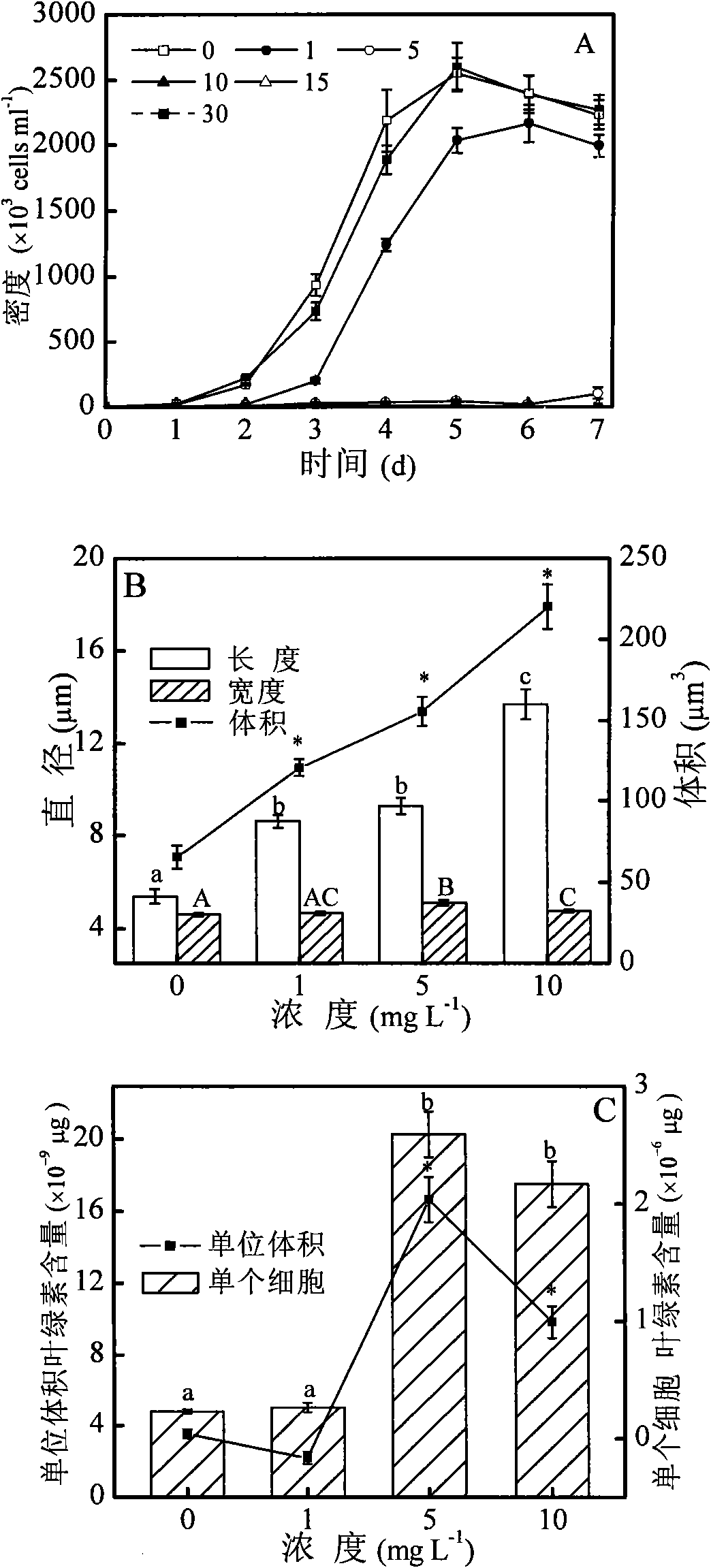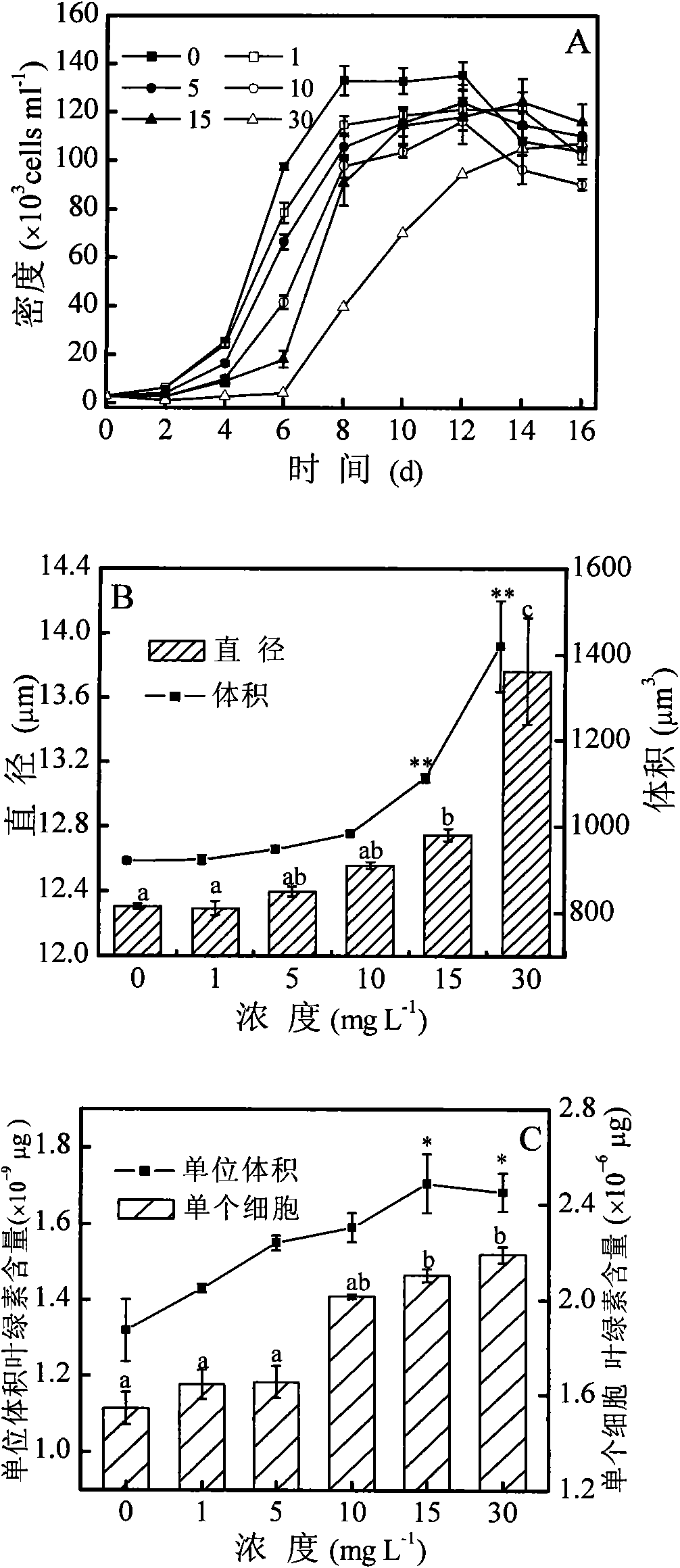Novel application of salicornia europaea and root extractive thereof
A technology of extracts and grass roots, applied in the field of salicornia and its root extracts, can solve the problems of unseen chemical effects of salicornia
- Summary
- Abstract
- Description
- Claims
- Application Information
AI Technical Summary
Problems solved by technology
Method used
Image
Examples
Embodiment 1
[0033] Embodiment 1, each extract is to the growth inhibition experiment of three kinds of microalgae
[0034] 1. Test method
[0035] A 100ml Erlenmeyer flask was used in the experiment, containing 40ml of fresh f / 2 culture medium. Three kinds of microalgae and various extract solutions were added respectively. The initial density of algae and the concentration of each extract are shown in Table 1. The microalgae culture solution added with the same volume of f / 2 culture solution was used as the positive control (CK), and the microalgae culture solution added with the same volume of extract solvent was used as the negative control (0mg L -1 ), the petroleum ether phase takes petroleum ether as a contrast, the water phase takes f / 2 culture fluid as a contrast, and the other three phases take acetone as a contrast, and the final concentration of each solvent in the culture fluid is 0.1%. The results show that under this concentration, petroleum Ether and acetone had no effect...
Embodiment 2
[0059] Embodiment 2, culture water filtrate is to the growth inhibition experiment of two kinds of microalgae of Skeletalum costa and Prorocentrum donghaiense
[0060] In order to verify whether the effective grams of biomass can be secreted into the environment, we took S. costatum and P. donghaiense as the experimental objects, and carried out biological identification using the cultured and filtered water of Salicornia.
[0061] experiment method:
[0062] The inoculum biomass will be 10, 30, 60g FW L -1 Salicornia salicornia was cultured in f / 2 culture solution for 30 days, then the salicornia salicornia was removed, and then the culture solution was filtered through high-pressure sterilized filter membranes (Whatman GF / F, 0.65 μm and cellulose acetate filter membrane, 0.22 μm ) and re-enriched with f / 2 nutrient solution, adjusting pH and salinity to 8.0±0.02 and 30 psu. S. costatum and P. donghaiense were immediately inoculated into the filtrate of salicornia culture wa...
PUM
 Login to View More
Login to View More Abstract
Description
Claims
Application Information
 Login to View More
Login to View More - R&D
- Intellectual Property
- Life Sciences
- Materials
- Tech Scout
- Unparalleled Data Quality
- Higher Quality Content
- 60% Fewer Hallucinations
Browse by: Latest US Patents, China's latest patents, Technical Efficacy Thesaurus, Application Domain, Technology Topic, Popular Technical Reports.
© 2025 PatSnap. All rights reserved.Legal|Privacy policy|Modern Slavery Act Transparency Statement|Sitemap|About US| Contact US: help@patsnap.com



